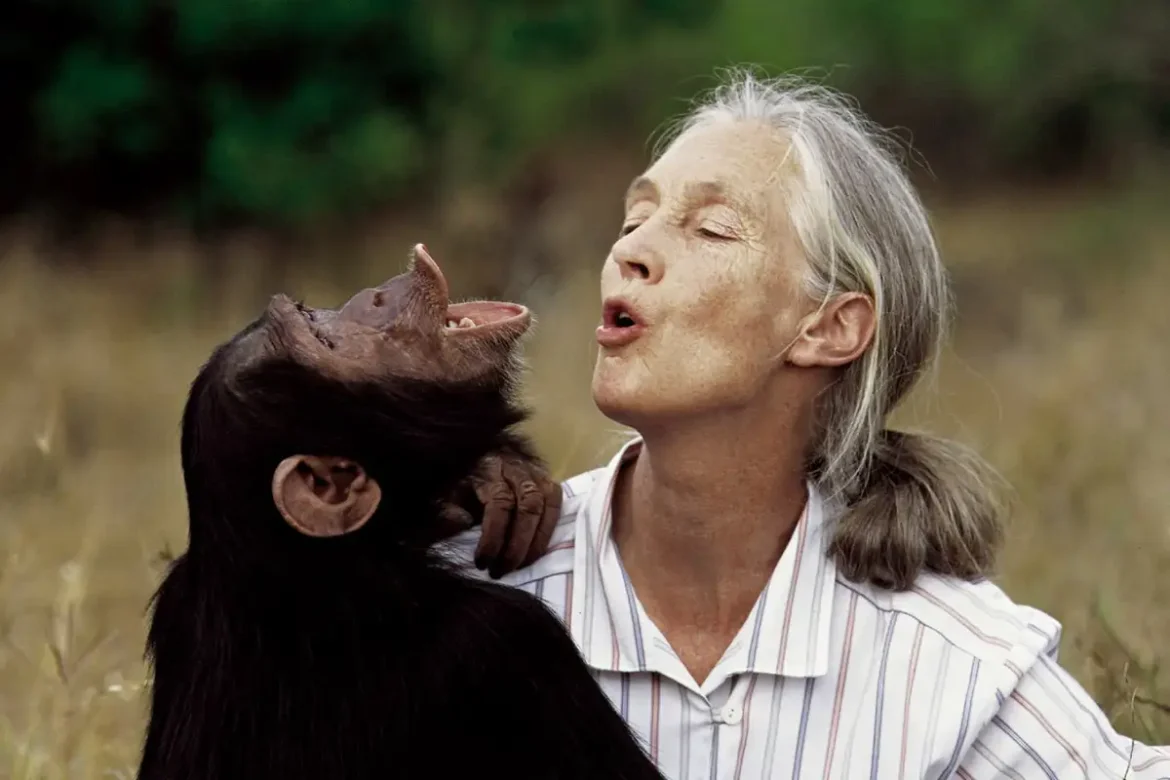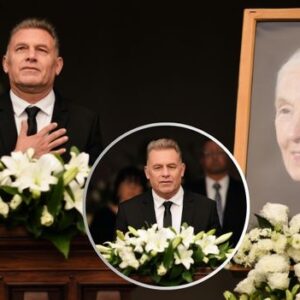Inside Westminster Abbey, the air felt almost holy — thick with reverence and memory. The towering stone arches seemed to lean in closer that morning, as though the very building was listening. Sunlight streamed through the stained-glass windows in soft fragments of emerald, gold, and rose, scattering across the marble floor like the forest canopy she once called home. At the center of it all rested a simple wooden casket, adorned with white orchids and ferns — flowers gathered from the forests of Gombe, where Jane Goodall’s voice first rose to defend the voiceless.

There were no lavish displays, no grand gestures — just the stillness of truth and legacy. World leaders, scientists, conservationists, and friends filled the pews. Many clutched notebooks or small trinkets she had once signed — testaments to a life that had touched millions. At the front sat Prince William and Princess Catherine, their expressions solemn yet full of admiration. Catherine wore a deep navy dress, the same hue Jane often wore during her lectures, while William held a single folded letter on his lap — one Jane had sent him years ago, urging him to “teach your children to listen to nature.”
:max_bytes(150000):strip_icc():focal(749x0:751x2)/jane-goodall046-b471014daf95412aaba09bacd6ded249.jpg)
When the choir began to sing “Morning Has Broken,” the Abbey seemed to breathe. Their harmonies echoed through the vast space like birdsong at dawn, tender and ancient. Then came the moment of silence. Every cough, every breath, every shifting foot faded into nothing. And into that silence stepped Prince William.
He approached the lectern with a quiet grace, pausing before speaking — not as a monarch, but as a man paying tribute to a hero. “Dr. Jane Goodall,” he began, his voice steady but touched with emotion, “taught us that compassion is not a weakness, but the purest form of strength. She reminded us that our planet is not ours to own, but ours to protect. She made the world gentler — and in doing so, made it stronger.”
As his words lingered in the still air, Princess Catherine stepped forward and placed a single leaf on the casket. Pressed between two thin sheets of glass, it had been taken from the fig tree under which Jane had first sat with the chimpanzees of Gombe — a symbol of her lifelong bond with the living world. Several children, representing Jane’s global Roots & Shoots program, followed her lead, laying down flowers, feathers, and small stones — gifts from the earth she so loved.
Then came a sound that none would forget. A recording of Jane’s voice — calm, gentle, unwavering — filled the Abbey. “If we listen to nature,” she said, “it will tell us everything we need to know.” The crowd closed their eyes, as if to hold that voice a little longer. Some wept quietly; others smiled through tears. It was as if she were still there — guiding, teaching, comforting.
When the service drew to its close, the Dean of Westminster raised his hand in blessing, and a soft murmur of gratitude swept through the pews. Outside, the sky opened with a light drizzle. Yet no one reached for umbrellas. As mourners stepped into the courtyard, they tilted their faces upward, letting the rain — gentle and pure — wash over them.
Then, from the Abbey’s garden, a flock of white doves rose into the air. They circled above the spire once, twice, before vanishing into the gray London sky. In that moment, a hush fell over the crowd. It was as if the world itself had paused to say farewell.
That day, as the bells of Westminster tolled across the city, people whispered the same words again and again — “She’s not gone. She’s home.”
And somewhere, beyond the clouds and across the sea, in the green heart of Africa, the forests of Gombe seemed to echo back — the rustle of leaves, the distant call of a chimpanzee, the eternal rhythm of life she had devoted her soul to protecting. Jane Goodall had left this world, but her spirit, like the wilderness she loved, would never fade.








